Sports Biometrics is excited to offer a selection of audio podcasts from a variety of well-respected authors that specialize in the athletic training and sports management fields. Podcasts are posted regularly, so check back often.
Here is the most recent podcast by Conference Advisory Board member and Founder of the GAIN professional development network Vern Gambetta. Vern is also president of Gambetta Sports Training Systems. Vern is recognized internationally as an expert in training and conditioning for sport having worked with world-class athletes and teams in a wide variety of sports. He is a popular speaker and writer on conditioning topics having lectured and conducted clinics in Canada, Japan, Egypt, Australia and Europe. Vern’s coaching experience spans 49 years at all levels of competition. His background is track & field, having coached at all levels of the sport. In addition, Vern served as the first director of the TAC Coaching Education Program, an innovative program designed to upgrade the standard of track and field coaching in the US. Episodes will appear here at the Sports Biometrics Conference site shortly after they are published by Vern.

We’re kicking off the year with our annual combined episode of the GAINcast and HMMR Podcast to discuss the state of training for sports. A lot has changed over the past year, so we sit down to discuss some of the biggest issues facing sports, the hot topics on our minds, and what we’re looking forward to in 2022.
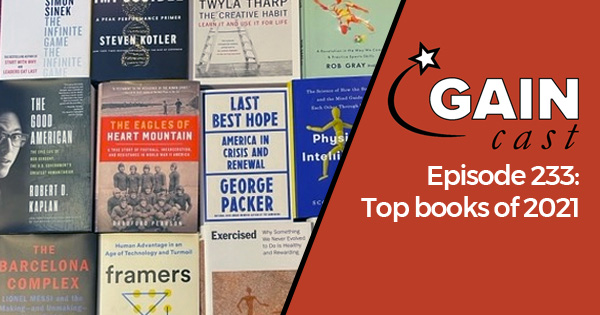
Vern is a notorious reader and he’s only gaining steam with age. This year he had 151 books on this week’s podcast he shares some key takeaways from his 17 favorite books of the year.
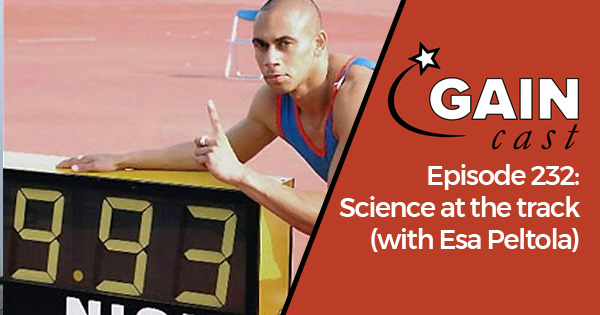
Esa Peltola is a retired coach and sports scientist. Having started his career as a national sprint coach in Finland, he worked in variety of roles in Australia and Qatar throughout the rest of his career. In addition to his coach Patrick Johnson, he played a key role at the Australian Institute of Sport, helped start up the Aspire Academy, and launch innovative talent identification programs.
The best sports scientists bridge the gap between theory and practice. They bring coaching experience to the table and help help solve the real problems athletes are facing. This describes Esa Peltola. His diverse experiences in coaching, physiology, talent identification, and sports science helped him drive athletes to the next level, including coaching the first Australian to break 10 seconds in the 100 meters. On this week’s GAINcast he shares his journey.
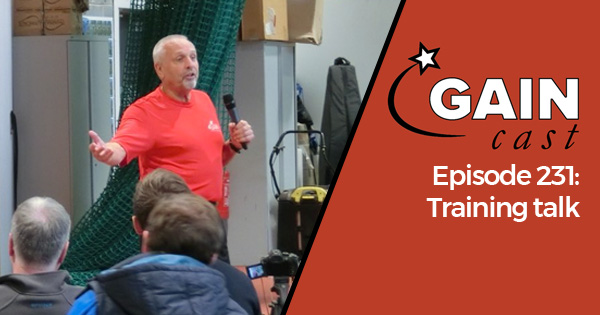
As we enter the final month in the year, it’s a good time to look back and share some of our recent thoughts about training and coaching. On this week’s GAINcast we cover a wide variety of topics including coaching and athlete specialization, finding a process, tips on organization, athleticism, sprint technique, and more.
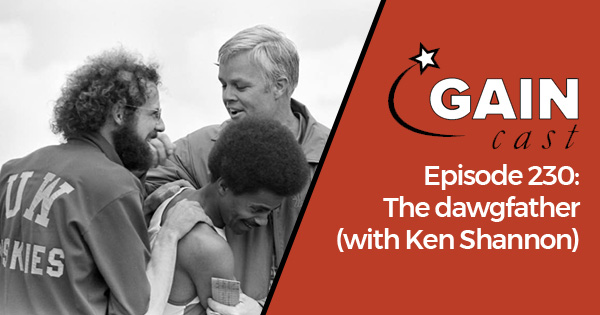
Ken Shannon was the head coach at the University of Washington for nearly 30 years, focusing on the throws and field events. Prior to that he was an assistant coach at UCLA and his alma matter Occidental College. Throughout his career he coached Shannon has produced 39 conference champions, 18 NCAA Champions and has coached 10 athletes to NCAA record-holder status. Among his top athletes was 7-time NCAA champion hammer thrower Scott Nielsen, American collegiate discus throw record holder Aretha Hill, Olympic discus thrower Adam Setliff, and collegiate decathlon record holder Mike Ramos.
Over three decades of coaching at the University of Washington, coach Ken Shannon quietly developed one of the most successful and diverse stable of field event athletes in the country and was a key influence on Vern’s own approach to training and weight lifting. In this week’s episode coach Shannon joins us to discuss his own development as a coach, throwing technique, and advice for young coaches.
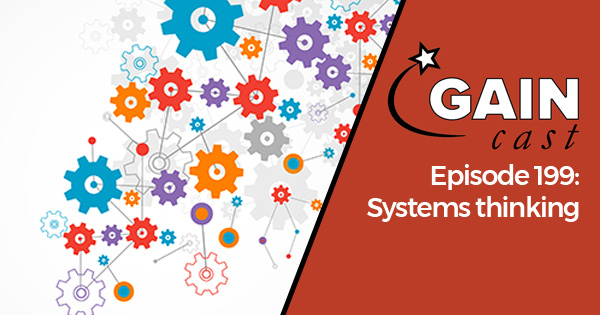
Legendary coach Vern Gambetta coaches the best to be better. On the GAINcast he answers one question a week on training and coaching. The GAINcast is brought to you by the GAIN Network.
The best teams in the world aren’t just teams, they are systems. A system lends order and structure to enable the coach and athlete to focus on the process. It provides a framework to build on. On this week’s GAINcast we look at the power of systems, what makes a good system, and how systems fall apart.
3:30 – A historical look at systems: “If you look at the teams that are good, there is more to it than talent. They have a system.”
8:00 – Historical examples of systems and processes: “The best teams might not have the best technique, tactics, talent, or periodization. But what they do, they do well. They have a system to execute it to the best they can.”
13:00 – Staring to create a system: “By the time you finish your second year of coaching you should have the identifiable elements of a system defined. Then the rest of your career you are constantly refining those elements. Don’t be so rigid that you can’t modify them.”
15:45 – Key elements of a system: “Good systems are built on core values, progression, individualization, goals, and evaluation. They also have have a willingness to innovate; innovation comes around the edges, not in the core beliefs.”
19:15 – The athlete’s role in the system.
25:30 – Rigid systems and learning to adapt: “A system cannot be static. You have to be asking the questions that will get you better.
30:00 – Talent identification and development.
30:45 – Avoiding inbred systems.
This episode begins with some thoughts on learning before diving into some highlights from last week’s event in the GAIN Master Class Series on periodization and planning with Vern, myself, Nick Lumley, and Dan Noble. After the panel discussion, we take a look ahead at the next event with Keith Baar by revisiting our interview with him on GAINcast 177.
To hear more about these topics you can listen to the full episode above. If you like what you hear on the GAINcast, don’t forget to give us a review and subscribe on iTunes.
Gareth Sandford is a post-doctoral research fellow at Canadian Sport Institute Pacific. Sandford came to our attention with his doctoral work analyzing the 800-meter run. He traveled the world to dissect the event, coming up with some interesting and novel findings. He continues to support track and field, but also has a background across many sports and continents.
To hear more about these topics you can listen to the full episode above. If you like what you hear on the GAINcast, don’t forget to give us a review and subscribe on iTunes.

We’re bringing back our annual tradition to start off the year with a combined episode of the GAINcast and HMMR Podcast to discuss the state of training for sports. A lot has changed over the past year, so we sit down to discuss some of the biggest issues facing sports, how things look going forward, and what we’re looking forward to in 2021.
0:00 – Introduction
2:15 – Taking your BBQ skills to the next level.
6:15 – Corona excuses: “Corona exposes your mindset and culture, even more so during the second wave. Some people come with excuses on what they can’t do. Others find a way to do what they can.”
9:00 – Adjustments to training and how lockdown training has filled gaps.
14:30 – The future of monitoring and wellness questionnaires.
18:45 – Monitoring with large groups: “You can get a good gauge for the team by the energy level. Listen to the volume of training: if everyone is quiet, they’re probably pretty tired. If they are getting loud then they’ve got energy.”
21:00 – Switching team makeup to find leadership groups: “50 years ago I dreamed about measuring all the things we can now measure. But now I don’t know. We can measure a lot, but what do we do with it?”
28:45 – Olympic selection and 2021 Olympics.
35:30 – Lasting impacts of the pandemic on high school sports and the loss of the dual meet.
41:45 – Looking forward to new challenges in 2021.

Meghan Chayka – Co-Founder & CEO, Stathletes
Alexandra Mandrycky – Director of Hockey Strategy and Research, Seattle Kraken
Hilary Knight – Professional Hockey Player, US Women’s National Ice Hockey Team
John Buccigross (moderator) – SportsCenter Anchor, ESPN
The amount of data available to NHL teams has exploded over the last year as player and puck tracking officially entered the rink. By some estimates, tracked players and pucks produce a total of 2,200 data points per second. Will this be data overload for a sport that has only recently embraced the use of analytics to drive on-ice value? And how do video analytics complement – or compete with – tracking data? How are expansion teams emphasizing data from day one to build a franchise? And what will it take to convince players, many of whom pushed back on the quality of pucks with tracking technology, to embrace analytics? This panel will dive into the world of hockey analytics, examining how teams are using the abundance of new information to help inform player personnel decisions, in-game coaching strategy, and scouting, amongst other things.

Mark Cuban – Owner, Dallas Mavericks
Andy Slavitt – Senior Advisor, White House COVID Response Team
Nate Silver – Editor-in-Chief, FiveThirtyEight
Of all the aspects of everyday life that data has transformed, perhaps nowhere was the impact more deeply felt than in healthcare. As friends and two leading public voices, Andy Slavitt and Mark Cuban will discuss healthcare and the role data has had and will continue to have, in improving care and society at large. While data has revolutionized health for everyone, Andy and Mark will narrow in what data has taught us about the health of athletes, who come from diverse backgrounds, experience higher physical and mental health risks, and are exposed to inconsistent healthcare experiences.

September 3, 2021
David Fizdale – Former Head Coach, New York Knicks
Shane Battier – Vice President Basketball Development & Analytics, Miami Heat
Zach Lowe – Senior Writer, ESPN
Adrian Wojnarowski (moderator) – Senior NBA Insider, ESPN
Analytics have revolutionized sports to identify new strategies and help evaluate players, but what about intangibles? How do we evaluate the ‘glue’ players that play a pivotal role in the locker room, but whose names are not necessarily atop the stat sheet, or the hustle that does not get marked down but leads to a steal breakaway? This panel examines how teams try to put numbers on these vital moments for teams. Hear from coaches, players, and the journalists who report out on the ‘culture codes’ of teams as they discuss the analytics behind culture and the potential to measure these ‘glue’ players.
Join co-hosts Jessica Gelman and Daryl Morey as they team up with guest Shane Battier, Vice President of Basketball Development & Analytics, Miami Heat. Hear them discuss how Shane is applying lessons learned as a former player to analytics, quantifying culture and the unique way Coach K influenced it at Duke and a recap of Shane and Daryl’s legendary karaoke duet at Shane’s annual Battioke charity fundraiser for the Battier Take Charge Foundation.
The Sloan Sports Analytics Conferences invites you to join our Co-Founders and sports industry experts Daryl Morey (Head of Basketball Operations, Philadelphia 76ers) & Jessica Gelman (CEO, Kraft Analytics Group) as they host and chat with high-profile guests in the sports, media & entertainment space. Each episode will focus on demystifying and debunking the myths of analytics in sports, specifically, the dangers of using trash data to make decisions. Produced and edited by Jasonaduclos.

Join co-hosts Jessica Gelman and Daryl Morey as they connect with guest Andrew Friedman, President of Baseball Operations for the reigning MLB champions, the Los Angeles Dodgers. Hear them discuss how the Dodgers leverage analytics to customize individual players’ development and maximize their likelihood of success, and what Andrew thinks the biggest opportunities for analytics in the MLB are.
Join co-hosts Jessica Gelman and Daryl Morey as they chat with Casey Wasserman, chairman of the 2028 Los Angeles Olympic games and CEO of Wasserman. Hear them discuss the importance of analytics when representing athletes, Casey’s plans for the 2028 Olympics, and the launch announcement of the SSAC Mentorship Program presented by Wasserman. This mentorship program is designed to assist students and young professionals from underrepresented backgrounds in navigating potential careers in the sports industry.
Sports Loft works with the most exciting tech startups in sport and entertainment. Listen for our network’s insight into sport, entertainment, investment, and technology. Available as an Apple Podcast Series, the authors have given us permission to present this session.
Data plays an increasing role in elite sports performance management. We chatted to Jesus Perez, assistant manager to Mauricio Pochettino at Tottenham Hotspur for five years, and Zone7’s Tal Brown about data informed decision making. Both set out that context is king. Someone needs to analyze the data. Coaches, like Perez and Pochettino, are the point at which data sets merge and decisions are needed. If done well, clubs can save money because their players are not picking up wages while injured, estimated at £35m a year in the Premier League. They discuss how managers have to be held accountable for players getting injured if the data said they needed a rest. Tal said: “when I’m asked by investors in Silicon Valley ‘why are you in sports, it’s not a very big market? There are no sports teams in the Fortune 500.’ My answer is that if you want to create technology for human performance, you need data about it, and going back 2, 3, 4 years, the only industry that had this kind of data at scale consistently is sports.” Jesus discusses how he has used data to understand players and gives examples from his time at some of the biggest clubs in England and Spain.
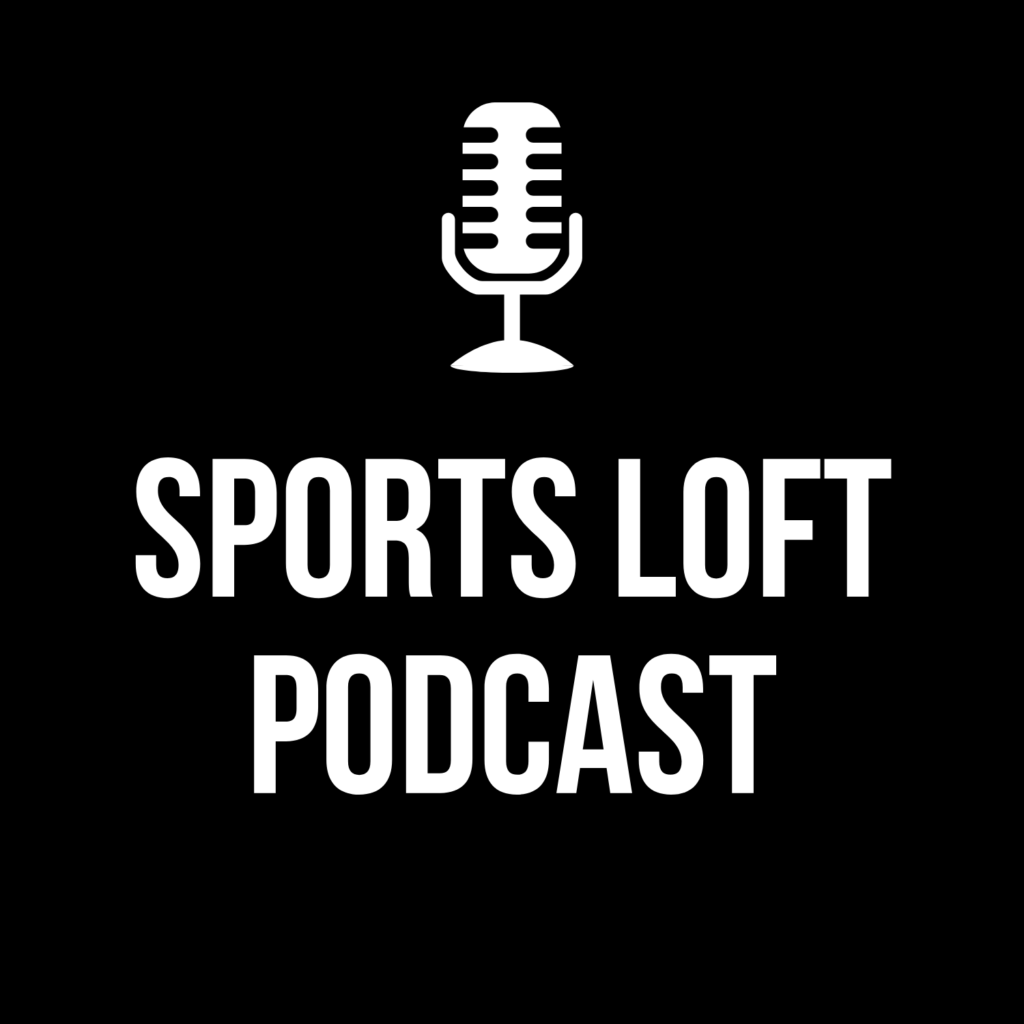
The Atlanta Hawks’ State Farm arena has been ranked as the best NBA Game experience in both 2019 and 2020. With the focus on the game experience in the NBA and heightened consumer expectations, that’s no mean feat – especially when, in the first year they won they award, the team wasn’t doing well: “When the team’s winning, the beer is colder and the hotdogs are warmer.”
So for teams, how can you deliver a better experience for the fans across all aspects of their experience – from before the game, at the venue and after the venue. How do you help them get the information that they need to ensure that they have the best experience? How do teams compete against other ways that people can spend their time?
In this episode, Yanni spoke to Donny White, CEO at Satisfi Labs and David Garcia, Senior Vice President, Experience & Innovation at Atlanta Hawks. They discussed the approach that led the Hawks to be ranked as the #1 gameday experience in the NBA, what David has been able to bring from his background with Amazon and Disney into the NBA and how the data captured by Satisfi’s AI assistant is informing changes to the fan experience at Atlanta’s State Farm Arena.
Quotes from this episode:
David – “When fans rate their experience at a game, it’s tied to the amount of information they have before they arrive and the expectations that they come in with. For example, the bag policy doesn’t change from one guest to the next. But the guests that knows you can’t bring a bag will have a better experience than the guest that didn’t know and shows up and has to deal with that.”
Donny – “The new fan is a data giver. They’ll ask questions, they’ll tell their friends, they’ll be on social media, they’ll communicate – they have an expectation that brands will respond to them.”

It used to be that all the most exciting marketing happened in the B2C space – those were the campaigns that won awards and got featured in the industry press. The B2B marketeers were solid, reliable but not that interesting. Not any longer. A world of always-on consumers has forced B2B brands to totally re-think how they talk with their consumers. The B2B tech buyer is the same person who is buying the Vans trainers and subscribing to Netflix. They want personalization, content relevant to their interests, and businesses who share their values. B2B marketeers have had to up their game.
For early-stage companies, this is a challenge. How do you deliver the quality of marketing and content across multiple channels with limited resources and budget? How do you build a consistent message when the product is evolving so fast? But equally, in the early days of a startups’ journey, companies are focused on understanding their customer’s needs and building an initial product that they can sell – do they really need a brand at that stage? As they acquire more customers and the product becomes increasingly defined, that’s when the company’s brand – as Jeff Bezos put it, “What other people say about you when you are not in the room” – becomes increasingly important.
In the latest Sports Loft podcast, we are joined by the Chief Marketing Officers of FEVO and Greenfly, Betty Tran and Tom Kuhr respectively. They discuss why a brand is important to achieve scale, how their brands are constantly evolving and how building a brand plays into fundraising conversations.

Sports fans have got so many channels that they might subscribe to – and in many cases, they are driven by which channel has the right to whatever they want to watch. However, the experience of watching a game is varying more and more between broadcasters as the channels seek to differentiate themselves – whether it’s through cameras, commentators, interactivity, graphics, or studio presentation.
Consequently, the need to innovate (and sometimes innovation for the sake of doing something different) becomes more important for content owners. How can the broadcasters get the fans to watch just a bit longer? How can they provide the fans with a differentiated experience that enables them to have their voice heard or to access more complementary content on their phone? How is interactivity changing the presentation of the broadcast? How do they have to compete (or compliment?) the teams, leagues, and athletes who are becoming content producers in their own right? How is on-screen talent being evaluated – is it now as much about the community that they can bring?
In the latest Sports Loft podcast, we are joined by Michael Bucklin, Vice President of Digital Content at Fox Sports, who leads the development of content to complement Fox’s rights portfolio such as the Super Bowl and FIFA World Cup, as well as studio shows such as Fox NFL Sunday. We are also joined by Tagboard’s President Nathan Peterson, whose clients include content owners such as Fox Sports, NBC, NFL Media, and MLB.

Deven Hurt’s background in sports includes work in cybersecurity for Nike and the NBA.
He’s currently the CEO and co-founder of PredictionStrike – the world’s first sports stock market, allowing fans to buy and sell shares of their favorite pro athletes.
The company raised its first VC funding in 2021 and has processed over $4.5M of transactions on the platform to date.
In this conversation, I discussed with Deven the past and present of PredictionStrike, the differences, and similarities between the stock market, sports betting, and PredictionStrike (risk profile, intrinsic value, expected returns, etc.), his plans, projects, and projections for sports investing, and so much more.

Today’s Halftime Snack features Scott Deans – former collegiate kicker and punter, architect, designer, and data analytics manager.
Scott is an expert in design, performance, and technology. Today, he’s the CEO and founder of BeONE Sports – a platform that uses AI to help young athletes maximize their performance, gain exposure for their talents, and get advanced training on demand.
In our conversation, we talked about:
How Scott’s background as a semi-professional athlete tied him to BeONE
BeOne from idea to product to monetization
Strategic growth for BeONE
Scott’s vision for the future of young athletes & NIL
And more!
Come snack with us!

Today’s Halftime Snacks features Santosh Vuppala – an expert in software and product development from India who’s passionate about building solutions for people.
Santosh once led the development of a renewable energy platform that helped over 50,000 people and built a digital product that gave access to educational experiments to high school students.
Today, he’s the co-founder of HomeGround – a platform that helps grassroots cricket players and coaches with instant analytics, recommendations, and expert feedback on their training sessions.
We talked about the power of code and software, the technology, value, business model, roadmap, projects, and vision of HomeGround.
Come snack with us!
Written By Ronen Ainbinder
On today’s Halftime Snack, I’m snacking with Pierina Merino!
Pierina is a Venezuelan entrepreneur who’s innovating daily. She’s pushing the boundaries of technology to bring the physical and digital world closer together.
Her creative industry experience covers everything from designing architectural projects with one of the greatest architects of our time (Frank Gehry) to leading the design strategy for premium VR experiences for fashion brands.
Today, she is the founder and CEO of Flickplay. This platform combines immersive video technology with gaming tools to create a new and innovative experience.
We talked about creativity, working with Frank Gehry, Flickplay’s technology, and how the digital and physical spaces will coexist to create new social experiences in the future.
🗣Come snack with us!